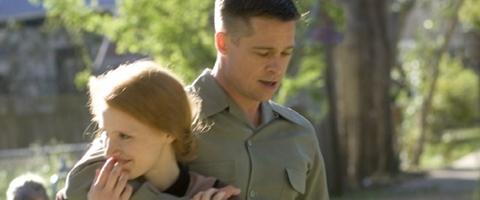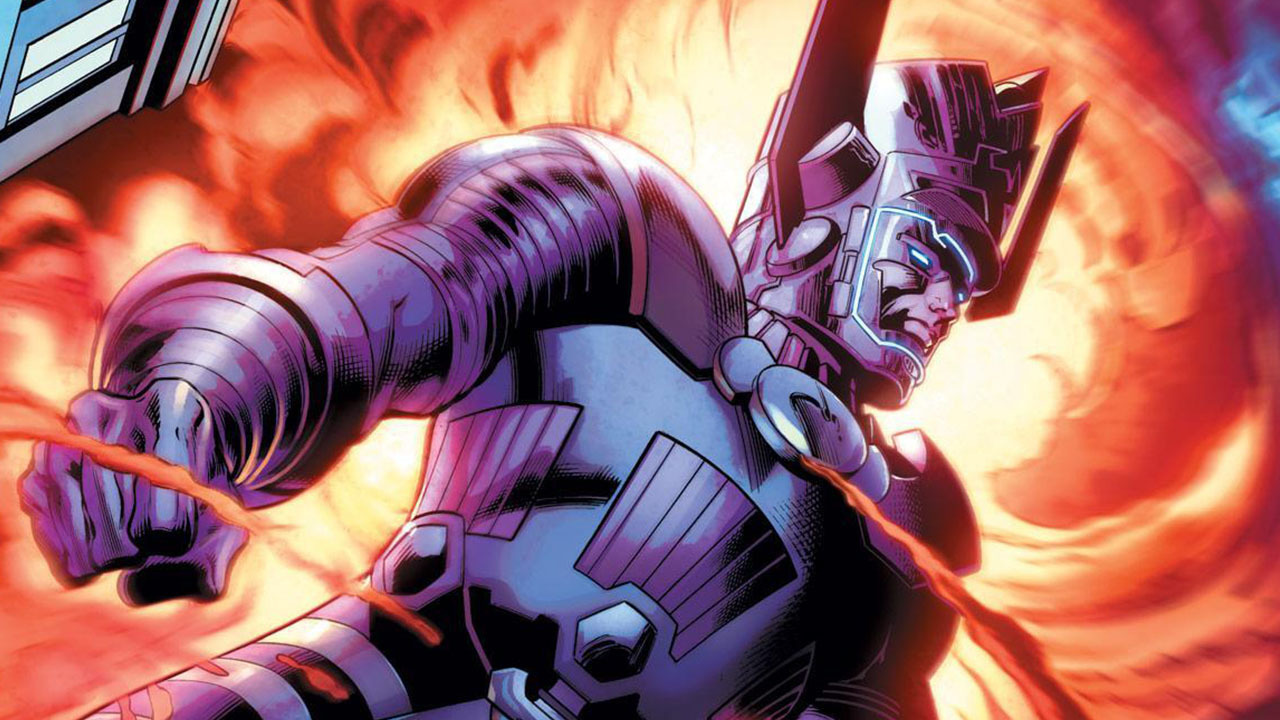There are a lot of wonderful themes threaded throughout Terrence Malick’s The Tree of Life. Like James Agee’s The African Queen script and others before it, Malick’s screenplay is flooded with description, translating into a telling of creation running through multiple storylines and quick cut-to shots. The images are meant to be an intensive foray into a world bigger than the entangled emotions of humans: of joy and love, hate and denial, and hope. Instead, we find grace and we find nature; the rest is supposedly minor. If on board, I would imagine the 2.5 hours fly by like a complicated symphony full of puzzles never meant to be understood. If not, I would imagine the film plays out as slowly as a full day of outside work in the middle of summer. It’s helpful to try and look through the lens of the former. There are many stories within The Tree of Life, but Malick’s focus is only on a couple. We meet with the birth of the universe, expanding wholly into a creation replete with volcanoes and, much later, dinosaurs. Time passes and bats congregate in the dusk, whirling, freewheeling through a city, coming together as often as they fall apart. We are off in a non-linear flurry of images, each bolder and prettier than the last.
Then we pause, hovering over a family. For over an hour we are invited into this 1950s home, shown nearly as many pieces of their story as we are left in the dark. We see the tree in smaller terms, how one member’s weaknesses are another’s strengths, how some branches are stronger than others, how some roots lean on one another for support. There is Mrs. O’Brien (Jessica Chastain), a woman magnified by light and laughter and her husband, Mr. O’Brien (Brad Pitt), a man with a hard nature who carries repression and anger in his forehead. There is Jack (Hunter McCracken), an instrument of impulse, emotional like his mother and hard like his father. Rallying against both. Surprising here is a small but earnest performance from Fiona Shaw, who has not been taken particularly seriously on HBO’s True Blood.
In these characters we are supposed to see the representation of ideas made flesh. Mrs. O’Brien is grace and Mr. O’Brien is supposed to be nature. If that were true, if that was all they were, Malick would not have spent so much time focusing on the outliers of their personalities, on individual, significant moments that transcend the limitations imposed by the dialogue.
The whole thing is beautifully shot, and when acting is necessary, the players work hard. But it doesn’t all work. Especially, it doesn’t all work together. The story of the family is more compelling than the history of time, though the history of time contains many of the more appealing visuals. Later, when Malick does try to connect his two storylines in a foggy celebration of past and present in the desert featuring a grownup Jack (Sean Penn), he only stretches an already incongruous plotline into the absurd.
Overall, The Tree of Life is a careful movie. This is really the statement Malick was hoping to make. There are too many detailed components to think otherwise. It’s just like this: If we were asked to focus on the movement of one simple, harmonizing blade of grass with an eyeful of an exploding volcano on the horizon, it would be difficult to keep our eyes on the prize. If Malick wanted us to see nature and see grace in its purest forms -- which is how he sets up the first half of his film -- why did he spend the latter half throwing emotional distractions our way? With The Tree of Life, Malick has given us a chance to look at an old view of creation through a different format. Sometimes there is just too much distance between his ideas. Often he doesn’t make the most of the moments he has created. The disc is super stark, very clean. The menu makes great use of blank space and is as visually appealing as the cover art. Blu-Ray copies also include a DVD and a digital copy, but if you have a Blu-Ray player, I wouldn’t suggest watching The Tree of Life in any other way. The visuals are too important.
Special features, on the other hand, are sparse. A 30-minute documentary, “Exploring The Tree of Life,” is the main feature on the disc. There are some top names interviewed for the segment, including David Fincher and Christopher Nolan, as well as Pitt, Chastain, and the producers. The focus is a discussion of theories about the film’s content and what role each person played in its making, although Nolan and Fincher are implemented to talk about Malick’s directing techniques. This might be one of the few discs where each of the producers involved were also asked to comment, which is pretty different. To be able to discuss the movie in bold terms is the producers job, after all, but we don’t often get to hear from them.
That’s it, though. The set, the cast, the crew, and the director are all covered in the documentary, but that’s pretty much all there is to the disc, excepting the theatrical trailer. I don’t know exactly what else might be added, since there is truly a lot discussed in the 30-minute feature. Somewhat like the film, the disc feels a little incomplete.
The Fantastic Four: First Steps Director Thankfully Didn't Rely Solely On Motion-Capture To Bring Galactus To Life, And I Couldn’t Be Happier With This Approach
Wait, Is Cate Blanchett Planning To Retire From Acting? Here’s What The Actress Says
If You Like Drop, There's Another Real Time Thriller You Need To Watch Immediately











